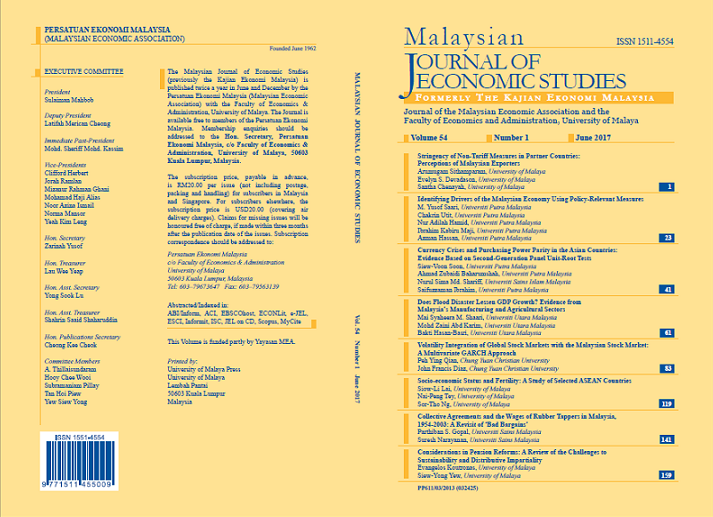Socio-economic Status and Fertility: A Study of Selected ASEAN Countries
DOI:
https://doi.org/10.22452/MJES.vol54no1.6Keywords:
Children ever born (CEB), fertility, socio-economic factors, wealth, women's educationAbstract
This study analyses fertility differentials and factors affecting childbearing in Cambodia, Indonesia and the Philippines. Although socio-economic development
has resulted in the desire for smaller family size, the availability of family planning services has also played an important role in fertility decline in the three countries under study. Of the three countries, Indonesia has the lowest fertility due to its strong family planning program, while the relatively higher fertility in the Philippines can be attributed to strong opposition of the Catholic Church against the use of modern contraception.
With fertility approaching replacement level, especially in Indonesia and Cambodia, the differentials in fertility across various sub-groups tend to be rather insignificant. Nevertheless, the number of children was inversely related with educational level and non-agricultural work among women in Cambodia and the Philippines. The poor in all three countries tended to have more children than those who were better off. Of the proximate determinants of fertility, contraceptive use and delayed marriage have by far the strongest fertility-inhibiting effects. Greater efforts are needed to step up information, education and communication activities and to ensure equal access to contraceptive information and services to allow couples to plan childbearing accordingly.

